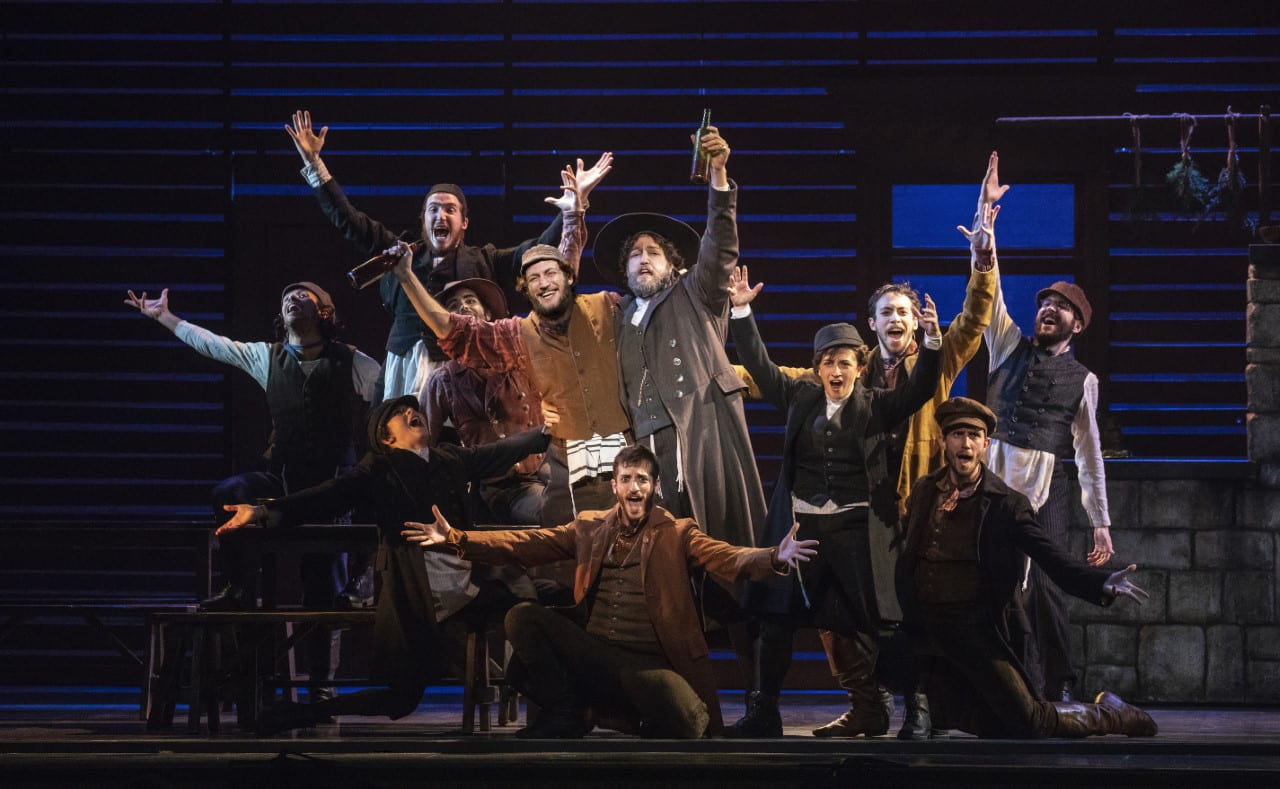
“Fiddler on the Roof,” an award-winning musical about the trials and tribulations of the intersection of faith and love, showed at the Palace Theatre Dec. 14-19. Credit: Courtesy of Joan Marcus
I gave the cast of “Fiddler on the Roof” a standing ovation Sunday — the first I’ve been able to give since the pandemic began.
I attended the last night of the production at the Palace Theatre with my mother, who was once a stage mom when I played the role of Golde in my high school’s production. She holds the musical close to her heart.
We briefly discussed those memories as we found our seats and waited for the show to begin. As the lights dimmed, curtains opened and a train sounded, a feeling of anticipation fell over the packed auditorium.
As soon as the violin — or fiddle — picked up and the word “tradition” fell from Tevye’s (Yehezkel Lazarov) mouth, the pandemic seemingly ceased to exist and the outside world fell away for two and a half hours, transporting a room of Columbus residents to 1905 Anatevka.
Many aspects of this production were exactly as I remembered, from The Fiddler’s (Ali Arian Molaei) constant presence on stage, Tevye and the Constable (Jason Thomas Sofge) speaking directly to the orchestra, the scrim — or backcloth screen used in theater — used as an active prop during “Chavaleh.” The stark lighting changes when Tevye pauses to talk to God were also the same.
However, this particular production and cast brought something unique to the Palace Theatre stage, leaving audience members with something profound.
Despite remembering scenes from this musical word for word, it felt as though I was seeing “Fiddler on the Roof” for the first time again. Lazarov’s portrayal of Tevye was refreshing and endearing. His timing and nuance on stage gave new life to the poor dairyman who wants nothing more than to ensure his daughters have a good life and remain faithful to God.
Maite Uzal’s portrayal of Golde, Tevye’s wife, reminded me what it felt like to fill the shoes of the loyal, God-fearing wife. Uzal often commanded the stage with just a look or a gesture. Where Tevye is loud and dramatic, Golde is soft spoken and calm when needed, holding her husband and the audience in the palm of her hand.
In the opening number, Tevye tells the audience he has five daughters,Tzeitel (Kelly Gabrielle Murphy), Hodel (Ruthy Froch), Chava (Noa Luz Barenblat), Shprintze (Jenna Harwood) and Bielke (Carly Post). The first three each present their father with challenges in the form of potential husbands, which test his love for them and his faith in God. Each of the daughters, graceful and bold, captured the hearts of audience members, drawing us into their hopes and dreams.
The idea of sticking to tradition amid the chaos and rapid change within the world resonated the loudest during extended pauses between lines, jokes and lyrics. As a theater kid, my director often told me to wait a beat longer for the audience to react. There was almost no need, however, for the actors on stage to wait for this audience as we clung tightly to every word, every note and every utterance of a sound that came from their lips.
There’s no doubt that the powerful voices, purposeful stomping and joyful dancing — choreographed by Hofesh Shechter and recreated by Christopher Evans — portrayed the story of joy and sadness clearly. Additionally, the lighting, costumes and elaborate set pieces — designed by Donald Holder, Catherine Zuber and Michael Yeargan, respectively — including a small tree that begins the show in full bloom and sheds its flowers over the course of each scene, were certainly not overlooked.
While the audience joyfully indulged in the highs of the show during “To Life” and felt the youthful desire of love and hope during “Matchmaker, Matchmaker,” “Miracle of Miracles” and “Now I Have Everything,” we also bore witness to lows, upsets and heartbreak as each number in Act 2 seemed to draw more tears than the last.
Unlike most musicals, “Fiddler on the Roof” does not have a happy ending with a large, over-the-top finale. The ending isn’t even a bittersweet one. The final scene, where the beloved fiddler sits alone under a barren tree, with his back to the audience as Tevye and his family pack their belongings and say their goodbyes, is heart-wrenching.
Silence was a large part of this show, from lengthy pauses between lines, wordless gazes between characters, the humorous quiet between jokes and the breathless silence between heartbreaks. However, the silence that filled the packed Palace Theatre as the fiddler and Tevye made eye contact for the last time, signifying the end, was deafening.
It’s poetic that “Fiddler on the Roof” is one of the first live theater performances to make its way back to Columbus, a city that always finds a way through the dark. Whether it was the timing or the story itself, audience members, including myself and my mother, left the theater with our hearts fuller.
Rating: 5/5


